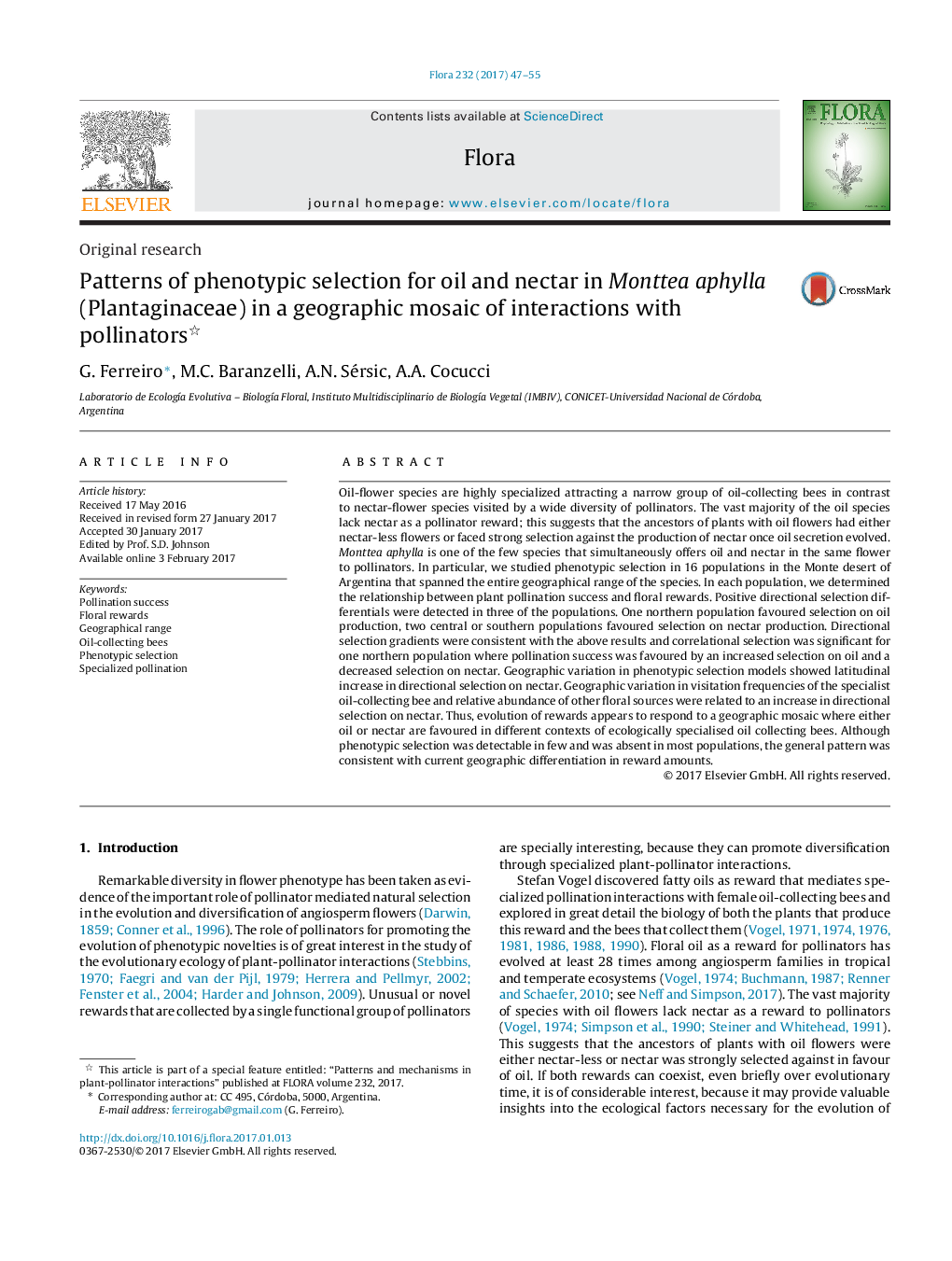| کد مقاله | کد نشریه | سال انتشار | مقاله انگلیسی | نسخه تمام متن |
|---|---|---|---|---|
| 5532457 | 1549927 | 2017 | 9 صفحه PDF | دانلود رایگان |

- A plant with flowers that simultaneously offer oil and nectar as pollinator rewards.
- Phenotypic selection on rewards varied across a changing ecological backdrop.
- Selection occurred in a few hotspots in opposite directions at geographic extremes.
- Oil was favoured where specialist oil-collecting bees were scarce.
- Geographic selection structure agreed with phenotypic differentiation.
Oil-flower species are highly specialized attracting a narrow group of oil-collecting bees in contrast to nectar-flower species visited by a wide diversity of pollinators. The vast majority of the oil species lack nectar as a pollinator reward; this suggests that the ancestors of plants with oil flowers had either nectar-less flowers or faced strong selection against the production of nectar once oil secretion evolved. Monttea aphylla is one of the few species that simultaneously offers oil and nectar in the same flower to pollinators. In particular, we studied phenotypic selection in 16 populations in the Monte desert of Argentina that spanned the entire geographical range of the species. In each population, we determined the relationship between plant pollination success and floral rewards. Positive directional selection differentials were detected in three of the populations. One northern population favoured selection on oil production, two central or southern populations favoured selection on nectar production. Directional selection gradients were consistent with the above results and correlational selection was significant for one northern population where pollination success was favoured by an increased selection on oil and a decreased selection on nectar. Geographic variation in phenotypic selection models showed latitudinal increase in directional selection on nectar. Geographic variation in visitation frequencies of the specialist oil-collecting bee and relative abundance of other floral sources were related to an increase in directional selection on nectar. Thus, evolution of rewards appears to respond to a geographic mosaic where either oil or nectar are favoured in different contexts of ecologically specialised oil collecting bees. Although phenotypic selection was detectable in few and was absent in most populations, the general pattern was consistent with current geographic differentiation in reward amounts.
Journal: Flora - Volume 232, July 2017, Pages 47-55